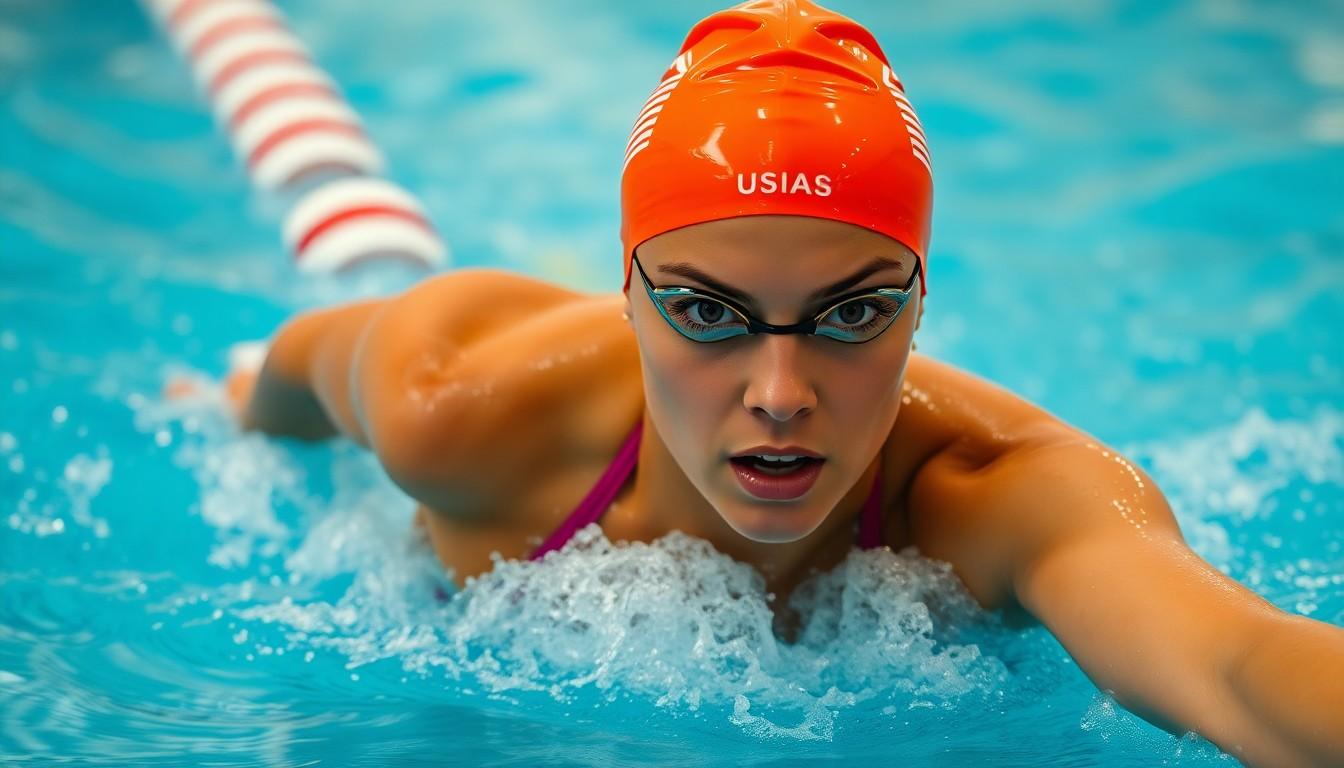When it comes to NCAA swimming, the competition is as fierce as a shark in a kiddie pool. Every stroke counts and every second matters. But what happens when the clock runs out, and the dreaded cuts come into play? For many athletes, this is the moment of truth that can make or break their collegiate swimming dreams.
Table of Contents
ToggleOverview of NCAA Swimming Cuts
NCAA swimming cuts define the qualifying time standards that student-athletes must achieve to compete at the championship level. These cuts vary across different events, often influenced by the level of competition within the conference. Training hard remains essential for athletes aiming to make these cuts, as every second plays a critical role in their success.
Competitions in NCAA swimming can be fierce, requiring swimmers to push their limits. Established standards determine the cuts, which may change annually based on a variety of factors, including overall performance trends. The NCAA committee regularly reviews past performances to set realistic yet challenging benchmarks.
Athletes who fall short of these time standards encounter significant challenges in pursuing their collegiate swimming ambitions. Each swimmer must understand their specific event’s cut criteria to devise effective training strategies. Access to accurate information about these cuts enables athletes to set realistic goals. Keeping a close watch on conference results offers insights into the competitiveness of the field.
Monitoring previous year’s performance offers valuable context, as this data often informs the current year’s cut times. Regularly checking NCAA updates ensures athletes remain informed about any adjustments to these standards. Swimmers must assess their progress against these benchmarks to sharpen their training focus, allowing them to enhance overall competitiveness in the pool.
Importance of NCAA Swimming Cuts

NCAA swimming cuts play a crucial role in shaping the collegiate swimming experience for student-athletes. Achieving specific time standards defines their opportunities and paths in competitive swimming.
Impact on Athletes
Meeting NCAA swimming cuts directly influences an athlete’s chances of competing at championship events. Time standards serve as critical benchmarks, with successful swimmers often feeling immense pressure during training and competitions. The challenge lies in consistently improving personal bests, motivating athletes to train diligently. Athletes who fall short of these cuts may face limited opportunities to compete, which can impact their confidence and future prospects in the sport. This competitive landscape cultivates a strong work ethic and resilience, ultimately fostering personal growth in various aspects of life.
Implications for Coaching Staff
Coaches bear significant responsibility in guiding athletes toward meeting NCAA swimming cuts. They must develop tailored training plans that focus on individual strengths and weaknesses. Coaches continually analyze swimmers’ performances, adjusting strategies to enhance competitiveness. Understanding the evolving nature of cut standards is essential for coaching staff to keep training programs relevant and effective. Success hinges on maintaining open communication with athletes, addressing mental and physical challenges, and instilling a culture of perseverance. Coaches play an integral role in preparing athletes to meet the rigorous demands of collegiate swimming.
Understanding the Cut Process
NCAA swimming cuts play a crucial role in determining a swimmer’s eligibility for competition. Achieving qualifying times impacts student-athletes’ chances of participating at the championship level.
Eligibility Requirements
Eligibility criteria for NCAA swimming include academic performance alongside athletic accomplishments. Student-athletes must maintain a minimum GPA and complete a specific number of credit hours each year. Additionally, they need to meet NCAA eligibility standards set for each event, which often vary by division. Each conference establishes its own benchmarks, creating a competitive landscape that influences recruitment and performance evaluation. Monitoring these requirements is essential for swimmers aiming to ensure their future in collegiate competitions.
Timing and Regulations
Timing regulations dictate the use of electronic timing systems or manual watches during meets. Each event has a designated cutoff time that athletes must meet to qualify for championships. Regulatory changes emerge annually, as governing bodies like the NCAA review performance data to adjust times. Coaches emphasize the importance of accuracy in official times, while swimmers prepare for the specific timing methods used during competitions. Understanding these regulations assists athletes in strategizing their training, ultimately driving them to improve their performance in the pool.
Strategies for Athletes to Meet Cuts
Athletes can adopt various strategies to meet NCAA swimming cuts effectively. These strategies incorporate both training techniques and mental preparation.
Training Techniques
Strength and endurance training significantly enhance swimming performance. Incorporating dry-land workouts, such as weightlifting and core exercises, builds overall strength. Interval training in the pool improves speed and race strategy. Focusing on stroke technique leads to more efficient movement, while monitoring lap times helps identify areas needing improvement. Utilizing video analysis allows swimmers to see their technique in action and make adjustments. Recovery practices, including proper nutrition and rest, also play a vital role in an athlete’s performance.
Mental Preparation
Visualization techniques foster a winning mindset for swimmers. Athletes benefit from picturing themselves achieving their goals, such as making specific cuts. Setting achievable short-term goals motivates athletes and enhances their focus. Developing routines before races helps reduce anxiety and increases confidence. Practicing mindfulness techniques can improve concentration during competitive events. Engaging with coaches and teammates creates a supportive environment that encourages accountability and motivation. Incorporating positive affirmations boosts self-belief, empowering athletes to tackle challenges effectively.
Conclusion
NCAA swimming cuts are more than just time standards; they shape the journey of student-athletes. Meeting these benchmarks requires dedication and strategic training, pushing swimmers to elevate their performance. For those who fall short, understanding the implications of these cuts is vital for future opportunities in the sport.
Coaches play a crucial role in this process, guiding athletes through tailored training plans and fostering a culture of resilience. As the landscape of NCAA swimming continues to evolve, staying informed about regulatory changes and performance trends remains essential. Ultimately, the pursuit of these cuts not only enhances athletic ability but also builds character and determination in the pool.

